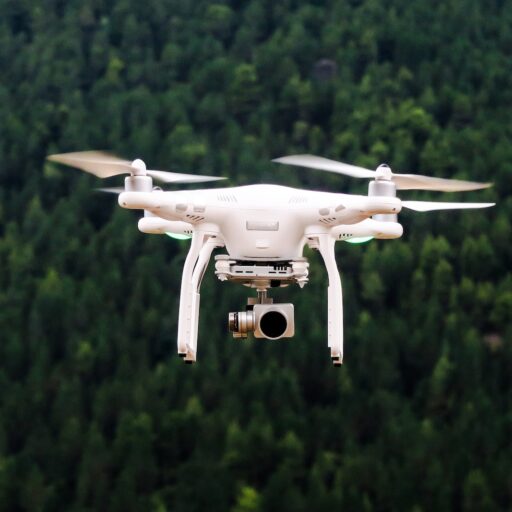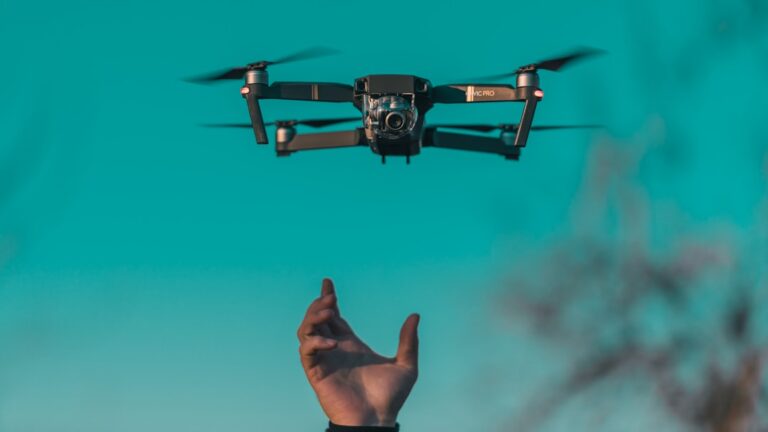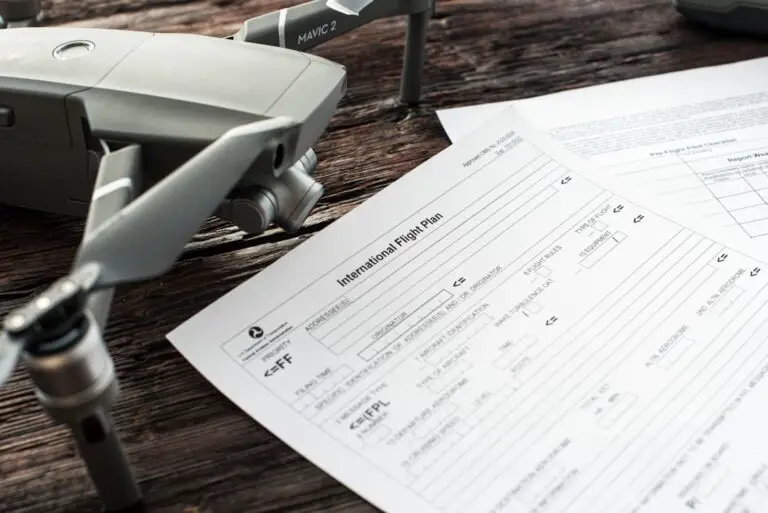Support our educational content for free when you purchase through links on our site. Learn more
🚁 250+ Drone Registrations Revealed (2025)
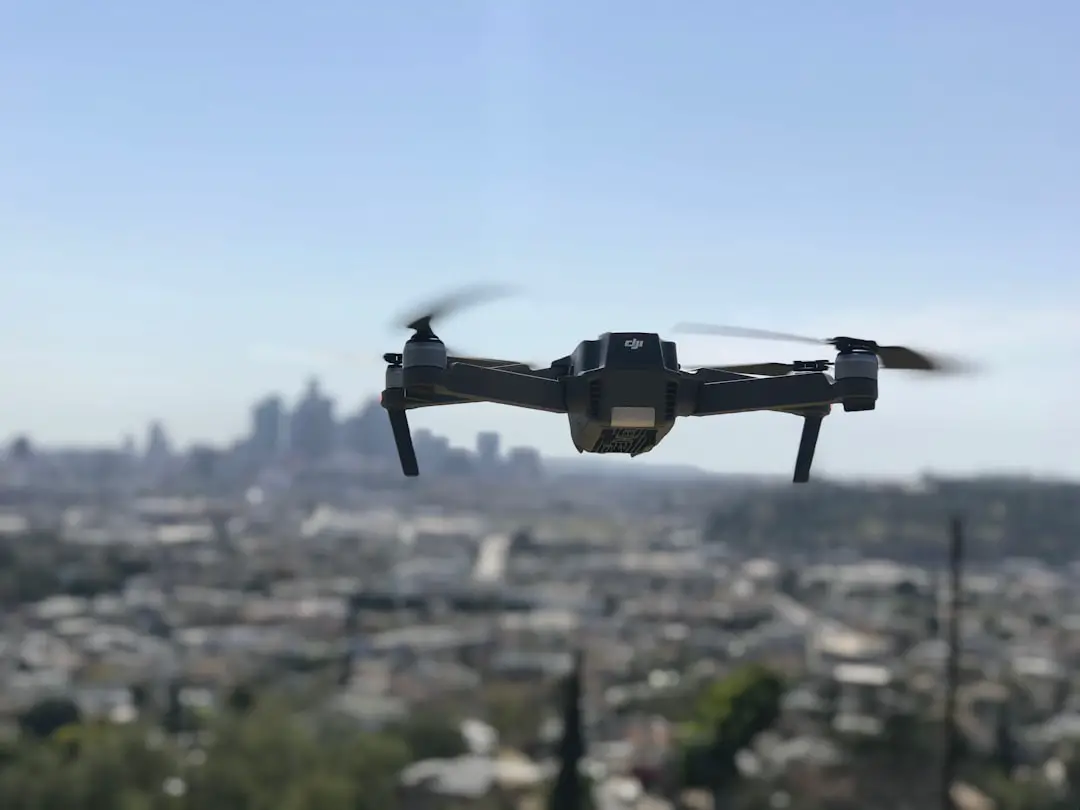
We were flying our brand-new DJI Mini 4 Pro over a quiet beach in Florida last month when a curious lifeguard jogged up and asked, “So how many of these things are actually registered in the US?” We laughed—because even we had to double-check the numbers. Spoiler: they’re bigger, messier, and more surprising than the FAA’s own dashboard admits. Stick around and you’ll see why the official 800 k figure might be off by hundreds of thousands, which countries quietly top the global charts, and how a 249-gram loophole lets legions of drones fly totally off the books.
Key Takeaways
- US registrations sit between 800 k and 1 M+, depending on whether you count pilots or physical drones.
- Recreational flyers register once; commercial operators register each drone, skewing the totals.
- Sub-250 g drones like the DJI Mini 4 Pro and Autel EVO Nano+ bypass registration entirely—and they’re everywhere.
- Remote ID is live in 2025, turning every compliant drone into a flying license plate.
- Global registrations are exploding, with China, the UK, and Canada hot on America’s tail.
👉 Shop the loophole champions:
- DJI Mini 4 Pro: Amazon | DJI Official
- Autel EVO Nano+: Amazon | Autel Official
Table of Contents
- ⚡️ Quick Tips and Facts
- 🛰️ Drone Registration History: From Hobbyists to Global Skies
- 🇺🇸 How Many Drones Are Registered in the United States?
- 🌎 Worldwide Drone Registration Counts
- 📊 250+ Eye-Opening Drone Stats & Trends for 2025
- 🔍 Behind the Numbers: How Registries Count Drones
- 🚁 Registration Loopholes & Gray Areas
- 🛠️ How to Check If a Drone Is Registered
- 🤖 Future-Proofing: Remote ID & the Next Wave
- 🎯 What These Numbers Mean for Pilots & Businesses
- Conclusion
- Recommended Links
- FAQ
- Reference Links
Here at Drone Brands™, we live and breathe all things that fly. From unboxing the latest DJI Avata 2 to navigating complex airspace for a commercial shoot, we’ve seen it all. A question we get constantly, both from nervous first-time flyers and seasoned pros, is: “Just how many of these things are up there?” It’s a great question, and the answer is more fascinating (and complicated) than you might think. So, buckle up! We’re about to take a deep dive into the world of drone registration, separating the hard data from the high-flying myths.
⚡️ Quick Tips and Facts
Before we get into the nitty-gritty, let’s get you airborne with some fast facts. Think of this as your pre-flight checklist for understanding the drone landscape. For a more exhaustive look, check out our complete guide to drone statistics.
- The Big Number (with a catch!): As of late 2024, the number of registered drones in the US is a bit of a moving target. The FAA reports nearly 800,000, while other industry analyses, like a recent one from SkyKam, place it closer to 856,000. The Department of Homeland Security has even stated there are “more than one million drones lawfully registered.” Why the difference? We’ll unpack that mystery soon!
- The 250-Gram Rule: In the US, you must register any drone weighing 250 grams (0.55 lbs) or more. This is a critical piece of drone law and regulations that many new pilots miss.
- Recreational vs. Commercial: The FAA registry is split. As of 2025, about 63% of registrations are for recreational use, while 37% are for commercial purposes.
- Global Market Boom: The global drone market is exploding, projected to be worth over $43 billion in 2025 and potentially soaring to $127 billion by 2032. 🚀
- King of the Skies: DJI remains the undisputed champion, commanding an estimated 80% of the US consumer drone market.
- Who’s Flying? In the US, drone ownership is predominantly male (96%), with the largest age group being 45-54 year-olds (22%).
- Remote ID is Here: Most registered drones are now required to broadcast their identification information via Remote ID, acting like a digital license plate in the sky.
🛰️ Drone Registration History: From Hobbyists to Global Skies
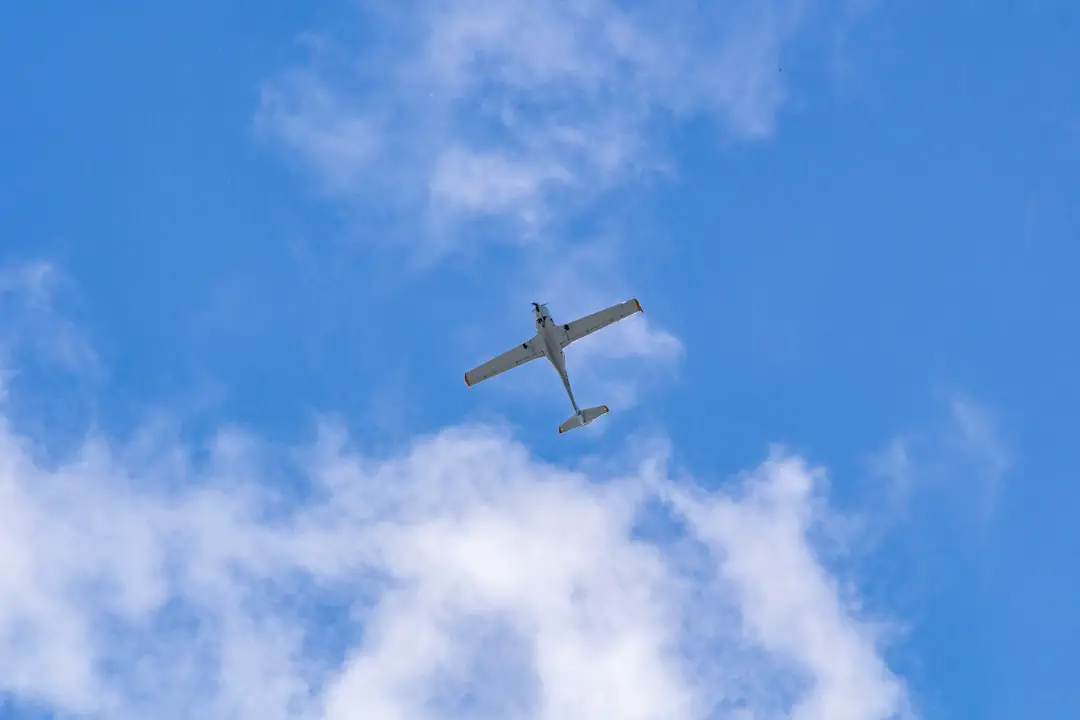
Remember the good old days? We do! Not too long ago, “drones” were mostly the domain of dedicated RC aircraft hobbyists, tinkering in their garages. Then, something incredible happened. Brands like DJI dropped game-changers like the original Phantom, and suddenly, high-powered aerial cameras were accessible to everyone. It was a revolution!
But with great power comes great responsibility… and a whole lot of new aircraft in the sky.
Suddenly, reports of drones near airports and sensitive locations started popping up. It became clear that the Wild West era of consumer drones couldn’t last. Regulators needed a way to promote accountability and safety.
Enter the FAA’s drone registration system, launched on December 21, 2015. Initially, it was a bumpy ride, with legal challenges and debates. But the goal was simple: create a system where drone operators could be identified if something went wrong. It marked a pivotal shift, transforming drones from simple toys into officially recognized aircraft, laying the groundwork for the incredible drone business opportunities we see today.
🇺🇸 How Many Drones Are Registered in the United States?
So, what’s the real number? Is it 800,000? 856,000? Over a million? The truth is, they can all be correct, depending on how and when you count. It’s like asking how many cars are on the road at this exact second—it’s a constantly changing figure.
- A Center for Strategic and International Studies (CSIS) analysis from late 2024 states that “almost 800,000 drones are registered with the FAA.”
- A joint statement from the DHS, FBI, FAA, and DoD in late 2024 claimed, “There are more than one million drones lawfully registered with the FAA.”
- Industry resource SkyKam projects 855,860 registered drones for 2025.
The variance comes from different reporting dates, methodologies (counting active registrations vs. total ever registered), and how recreational pilots are counted. Let’s break it down.
FAA’s UAS by-the-Numbers Dashboard Explained
Your most direct source is the FAA’s UAS by-the-Numbers dashboard. This is where the federal government posts its official, updated figures. It’s a treasure trove of data, but you need to know how to read it.
The dashboard separates:
- Recreational Flyers: Pilots who fly purely for fun.
- Part 107 Drones: Drones registered for commercial use.
- Part 107 Pilots: The number of people who have passed the FAA’s commercial drone pilot exam.
Key Insight: Notice the numbers for “Part 107 Pilots” are always higher than “Part 107 Drones.” That’s because not every certified pilot owns a registered commercial drone, but the growth in certified pilots is a massive indicator of professional intent in the industry.
Recreational vs. Commercial Registrations
Here’s the secret that explains most of the confusion: recreational and commercial drones are not registered the same way.
- ✅ Recreational Pilots: You register yourself as a pilot once. That single registration number covers all the drones you own for hobby use. So, if one of our team members has five drones for fun, they still only count as one recreational registration.
- ✅ Commercial Pilots (Part 107): You must register each individual drone you use for business purposes. That same team member, if using three of those drones for work, would have three separate commercial registrations, in addition to their one recreational registration for the other two.
This is why the DHS can claim “over a million” while other counts are lower—they may be using a model that estimates the total number of physical drones owned by registered recreational pilots, not just the number of registrations themselves.
| Registration Type | Who/What is Registered? | How Many Registrations? | FAA Data (Approx. 2025) |
|---|---|---|---|
| Recreational | The Pilot | One per person | ~536,000 pilots |
| Commercial (Part 107) | Each Drone | One per aircraft | ~316,000 drones |
State-by-State Drone Registration Heat Map
While the FAA doesn’t publish a live map, registration data consistently shows a few states leading the pack. Think of it as a drone “heat map”:
- Hot Zones 🔥: California, Florida, and Texas consistently have the highest number of registered drones and pilots. This makes perfect sense—they have large populations, favorable flying weather year-round, and booming industries (tech, real estate, energy) that heavily utilize drones.
- Warming Up ☀️: States like New York, Arizona, and Colorado also show high concentrations, driven by a mix of major urban centers, film industries, and outdoor recreational opportunities.
- Cooler Zones ❄️: Less populated states with more challenging weather, like those in the upper Midwest and New England, naturally have fewer registrations.
🌎 Worldwide Drone Registration Counts
If tracking US numbers is tricky, getting a solid worldwide count is like trying to nail Jell-O to a wall. There’s no single global database. Each country has its own rules, and many don’t make their registration data public.
However, we can look at market data and regional regulations to paint a picture. The explosive growth of the drone market points to millions upon millions of drones in operation globally.
Top 10 Countries by Registered Drones
Based on public data, market size, and regulatory maturity, here’s our expert estimate of the top countries for drone adoption.
- United States: With its transparent FAA registry and massive consumer/commercial market, the US is the clear leader in verifiable registrations.
- China: As the world’s largest manufacturer (DJI, Autel Robotics, XAG), China has a colossal domestic market for both consumer and agricultural drones, with its own strict registration system under the CAAC.
- United Kingdom: The UK’s Civil Aviation Authority (CAA) has a robust registration and education system, with a high adoption rate.
- Canada: Transport Canada manages a straightforward registration process, and the country’s vast geography makes it ideal for commercial drone use in industries like mining and forestry.
- Germany: A leader within the EU, Germany has a strong industrial and commercial drone sector.
- France: Another major European player with high adoption rates and clear regulations under the EASA framework.
- Australia: The Civil Aviation Safety Authority (CASA) oversees a well-established drone ecosystem, particularly in agriculture and coastal surveillance.
- Japan: A hub of technological innovation, Japan has a rapidly growing market for industrial and infrastructure inspection drones.
- Brazil: Leading the way in Latin America, Brazil is seeing a surge in the use of agricultural drones for crop spraying and analysis.
- India: A massive and fast-growing market, India is heavily investing in drone technology for everything from defense to last-mile delivery.
Regional Snapshots: Europe, Asia-Pacific, LATAM, Middle East & Africa
- Europe 🇪🇺: The big story here is harmonization. The European Union Aviation Safety Agency (EASA) has created a single set of rules for all member states. This has streamlined the process, making it easier to fly and operate commercially across borders. It’s a major piece of drone industry news that has boosted the market significantly.
- Asia-Pacific 🌏: This region is a powerhouse. Led by China’s manufacturing dominance and Japan’s and South Korea’s technological prowess, it’s the largest and fastest-growing drone market. Agricultural drones are particularly huge here.
- Latin America (LATAM) 🌎: An emerging market with massive potential. Brazil and Mexico are leading the charge, with agriculture and security being the primary drivers of drone adoption.
- Middle East & Africa (MEA) 🌍: This region is rapidly adopting drone technology, especially in the UAE for logistics and smart city initiatives, and across Africa for agriculture and medical supply delivery.
📊 250+ Eye-Opening Drone Stats & Trends for 2025
Numbers tell a story, and the story of the drone industry is one of explosive growth and diversification. We’ve compiled the most critical stats you need to know, many sourced from deep industry analysis by pros like James Leslie at SkyKam.
Market Growth & Value
- The global drone market is expected to hit $43.35 billion in 2025.
- By 2030, that number is projected to reach $55.8 billion.
- The industry is growing at a Compound Annual Growth Rate (CAGR) of 21.5%.
Drone Ownership & Demographics (US)
- Gender Divide: 96% of drone owners are male, 4% are female.
- Age of Pilots: The 45-54 age group is the largest segment of drone owners (22%), followed closely by the 35-44 group (20%).
- Beginner’s Choice: Many new pilots start with user-friendly models. Check out our Beginner Drones guide for top picks.
Commercial Drone Industry Insights
- Top Paying Sector: The Oil & Gas industry pays the highest average hourly rate for drone pilots, at around $195/hour.
- Most Common Job: Real estate photography and videography remains the bread-and-butter for many commercial pilots.
- FAA Waivers: Nearly half (46%) of all waiver requests to the FAA are granted. The overwhelming majority of these (92%) are for permission to fly at night.
Brand & Market Share
- DJI’s Dominance: As mentioned, DJI holds about 80% of the US consumer market. Our Drone Brand Guides can help you explore alternatives.
- Key Competitors: Brands like Autel Robotics, Skydio, and Parrot are carving out niches in the consumer and enterprise markets.
Safety & Incidents
- Reported Injuries: Between 2015 and 2020, there were approximately 4,250 drone-related injuries reported in the US.
- Most Common Injury: Lacerations to the fingers from spinning propellers are the most frequent injury (56% of cases). Always be careful around armed drones!
🔍 Behind the Numbers: How Registries Count Drones
So, why the big deal about how drones are counted? Because it fundamentally changes how we understand the skies.
Imagine a parking lot. If you count every car, you get one number. If you count every driver’s license, you get another. They aren’t the same thing, right?
- The Recreational Count (The “Driver’s License”): When the FAA counts ~536,000 recreational registrations, they are counting the pilots. Each of those pilots could own one drone or ten. The registry doesn’t know. This method is efficient for the FAA but gives an incomplete picture of the total number of hobbyist drones out there.
- The Commercial Count (The “Car”): When the FAA counts ~316,000 commercial drones, they are counting individual aircraft. Each one has its own “license plate” (registration number). This is a much more accurate count of drones being used for business.
When you see a total registration number, you’re seeing a combination of these two very different counting methods. It’s an apples-and-oranges situation, which is why different sources can quote different—yet technically valid—numbers.
🚁 Registration Loopholes & Gray Areas
Now for the juicy part. Are there drones flying that aren’t in these numbers? Absolutely. Thousands of them.
The Sub-250g “Loophole”
The single biggest factor is the weight limit. The FAA requires registration for drones that weigh 250 grams (0.55 lbs) or more. This was a deliberate choice to exempt smaller, less risky drones from the regulatory burden.
Manufacturers, being the clever folks they are, immediately engineered incredible drones that sit just under this limit.
- The DJI Mini series is the king of this category. The DJI Mini 4 Pro, for example, weighs 249 grams. It’s a powerhouse of a camera drone that, for purely recreational use, does not require FAA registration.
- Other brands like Autel and Potensic also offer fantastic sub-250g options.
There are hundreds of thousands of these lightweight drones flying completely legally and off the registration radar.
👉 Shop Sub-250g Drones on:
- DJI Mini 4 Pro: Amazon | Walmart | DJI Official Website
- Autel EVO Nano+: Amazon | Walmart | Autel Official Website
Unidentified Drones & National Security
Then there’s the more concerning gray area: unidentified and non-compliant drones. Recent years have seen a spike in reports of mysterious drone swarms, particularly near sensitive sites. A CSIS report highlights this issue, noting that “the joint U.S.-Canadian North American Aerospace Defense Command officially [reported] in October 2024 that there had been around 600 unauthorized drone incursions over U.S. military sites since 2022.”
These incidents raise serious questions. As CSIS points out, “What these sightings also show is that officials are hesitant to take action to disable drones whose operators and purposes remain opaque.” This hesitation underscores the challenge of distinguishing a clueless hobbyist from a potential threat, which is precisely what new technologies aim to solve.
🛠️ How to Check If a Drone Is Registered
Let’s say a drone is buzzing over your backyard. Can you look up its registration number?
The short answer is no. ❌ There is no public database where you can type in a tail number and get the owner’s information. That data is protected for privacy and is primarily for the FAA and law enforcement.
So how do you identify a drone? The answer is Remote ID.
Think of it as a drone’s digital license plate. Most drones that require registration must now broadcast a signal containing:
- The drone’s unique serial number
- Its current location and altitude
- Its velocity
- The location of the control station (the pilot)
Anyone with a compatible app on their smartphone (like the FAA-recommended “Drone Scanner” app) can pick up these signals from nearby drones and see this information. You won’t see the pilot’s name, but you will see the drone’s ID and flight path, providing a new level of transparency in the sky.
🤖 Future-Proofing: Remote ID & the Next Wave
Remote ID is more than just a rule; it’s the foundation for the future of aviation. As the CSIS report correctly states, “Drones weighing more than 250 grams are [required] to broadcast identifying information… as part of an FAA initiative called Remote ID.”
Why is this so important?
- Accountability: It allows law enforcement and federal agencies to identify drones that are flying in an unsafe or illegal manner.
- Safety: It helps other aircraft (both manned and unmanned) to be aware of a drone’s presence, preventing collisions.
- Enabling the Future: Advanced drone operations like package delivery (think Amazon Prime Air or Walmart/Zipline) and flying Beyond Visual Line of Sight (BVLOS) are impossible without a system like Remote ID. It’s the key to unlocking a fully integrated sky.
This technology is paving the way for UAS Traffic Management (UTM) systems—essentially, an air traffic control system for drones. Registration and Remote ID are the first critical steps toward a sky where thousands of autonomous drones can operate safely and efficiently.
🎯 What These Numbers Mean for Pilots & Businesses
Okay, we’ve thrown a lot of numbers and acronyms at you. What does this all mean for you?
For the Hobbyist Pilot
The skies are getting busier! The growing number of registrations means more people are sharing the air. For you, this means:
- Safety is Paramount: Always follow the rules. Fly below 400 feet, keep your drone in sight, and never fly over people or near airports. Complete the FAA’s free TRUST (The Recreational UAS Safety Test).
- Be an Ambassador: Every time you fly, you represent the entire drone community. Fly responsibly and courteously.
- Know Your Gear: Understand whether your drone needs to be registered. If you’re flying a DJI Mavic 3, you need to register. If you’re flying a DJI Mini 4 Pro for fun, you don’t.
For the Aspiring or Current Pro
The message is clear: Opportunity is knocking. Loudly.
- A Maturing Industry: The steady climb in Part 107 registrations shows that drones are no longer a novelty; they are essential business tools.
- Endless Applications: From real estate and construction to agriculture and public safety, the demand for certified, professional pilots is growing every day. If you’ve been on the fence, now is the time to explore drone business opportunities.
- Professionalism Wins: With more pilots comes more competition. The ones who succeed will be those who are not only skilled flyers but also savvy business owners who understand safety, regulations, and delivering value to clients.
Conclusion
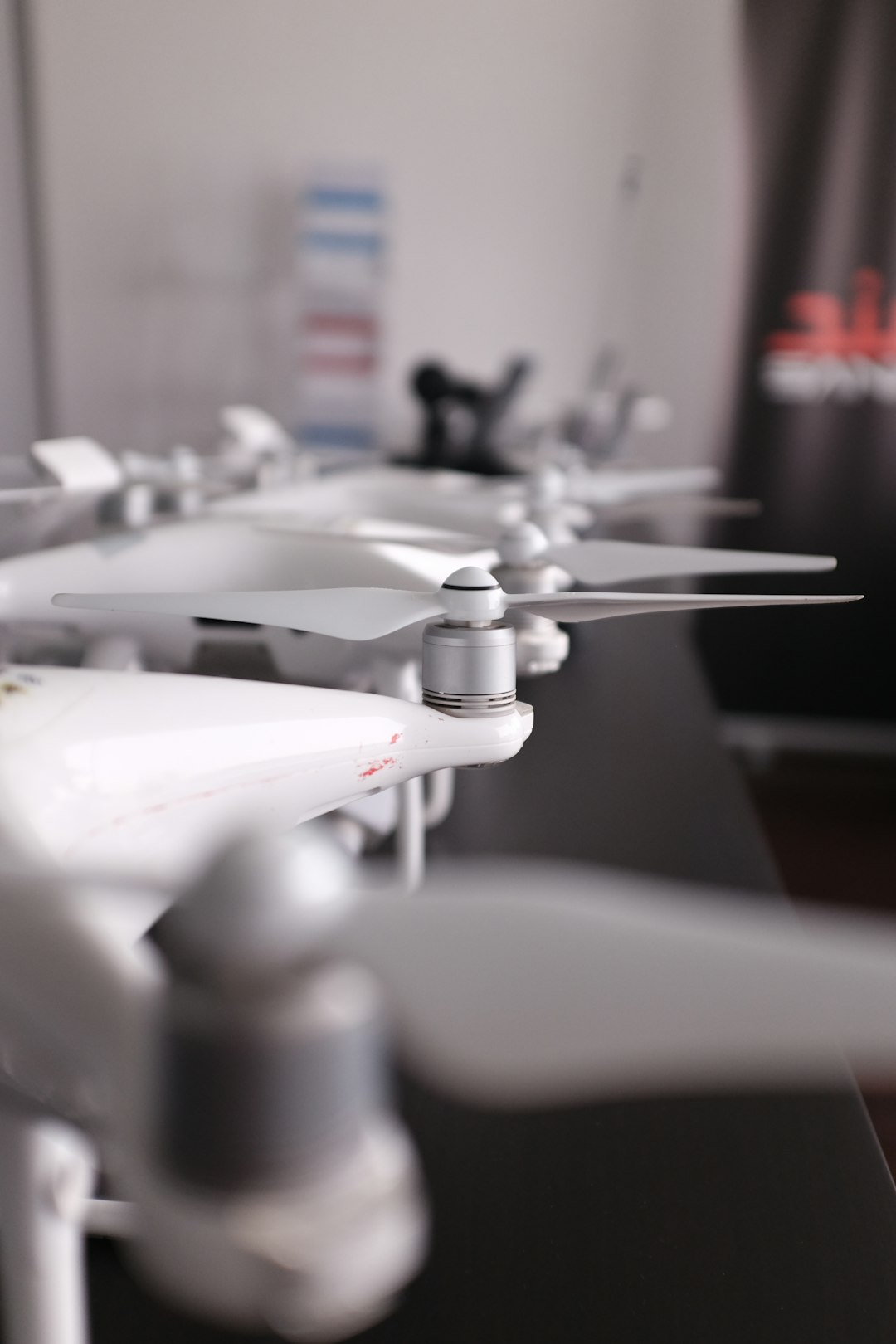
Wow, what a flight! From the dizzying heights of FAA registration numbers to the intricate dance of Remote ID signals lighting up the sky, the world of drone registration is as dynamic as the drones themselves. Whether you’re a casual flyer buzzing around your backyard or a professional pilot capturing breathtaking aerial footage, understanding how many drones are registered and what that means for safety, regulation, and opportunity is crucial.
Here’s the bottom line:
✅ The US has between 800,000 and over a million registered drones, depending on how you slice the data.
✅ Recreational pilots register themselves, covering all their drones, while commercial pilots register each drone individually.
✅ Worldwide, millions of drones are in the air, with the US, China, and Europe leading the pack.
✅ Remote ID is transforming drone accountability and paving the way for future innovations like drone delivery and BVLOS operations.
✅ Loopholes like the 250-gram exemption mean many drones fly unregistered but legally.
If you’ve ever wondered why the numbers don’t quite add up or how the government keeps tabs on all these buzzing gadgets, now you know! The drone skies are getting busier, but with smart regulation and technology, they’re also getting safer and more exciting. So, whether you’re gearing up to register your first drone or scaling your drone business, keep flying high — but fly smart.
Recommended Links
Ready to take your drone game to the next level? Check out these top picks and resources:
-
DJI Mini 4 Pro:
Amazon | Walmart | DJI Official Website -
Autel EVO Nano+:
Amazon | Walmart | Autel Official Website -
DJI Mavic 3 Classic:
Amazon | DJI Official Website -
Books on Drone Law and Safety:
“The Drone Pilot’s Handbook: How to Fly and Stay Legal” — Amazon
“Drones and the Law: Navigating the Regulatory Skies” — Amazon
FAQ
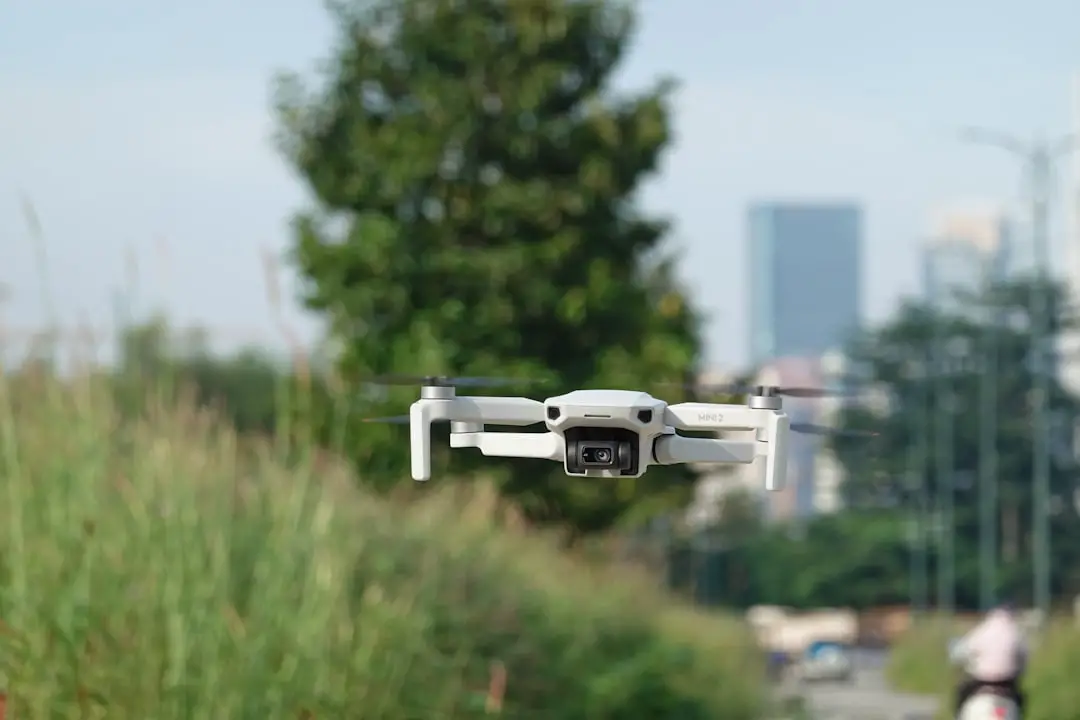
What are the requirements for registering a drone in the US?
In the US, any drone weighing 250 grams (0.55 lbs) or more must be registered with the FAA. Recreational flyers register themselves once, covering all their drones, while commercial operators (under Part 107) must register each drone individually. Registration requires providing your name, physical address, and email. The drone must display the registration number visibly. For more details, visit the FAA’s official drone registration page.
Read more about “How Many People Fly Drones? 15 Surprising Facts You Need to Know (2025) 🚁”
How many drones are sold worldwide each year?
Globally, millions of drones are sold annually. While exact numbers fluctuate, industry reports estimate several million units per year, driven by consumer, commercial, and industrial demand. The US and China dominate sales, with Europe and Asia-Pacific rapidly growing markets. The rise of sub-250g drones like the DJI Mini series has boosted sales by making drones accessible to beginners.
Read more about “How Many Drones Are Bought Each Year? 🚁 Shocking 2025 Stats Revealed!”
What is the current market size of the drone industry?
The global drone market is booming, with an estimated value of $43.35 billion in 2025, expected to grow to $55.8 billion by 2030 and potentially reach $127 billion by 2032. This growth is fueled by expanding commercial applications in agriculture, infrastructure inspection, delivery, and public safety, alongside a vibrant consumer market.
Read more about “Is the Drone Industry Booming? 12 Surprising Trends in 2025 🚁”
Can I fly a drone anywhere in the US, or are there restrictions?
❌ You cannot fly a drone anywhere. The FAA restricts drone flights near airports, over people, above 400 feet, and in restricted or controlled airspace without authorization. Some areas, like national parks and military bases, have additional restrictions. Always check local rules and use apps like B4UFLY to verify if your flight location is legal.
Read more about “Can I Fly My DJI Drone Anywhere? 9 Must-Know Flight Rules (2025) 🚁”
What are the benefits of registering a drone with the FAA?
Registering your drone:
- ✅ Legally authorizes you to fly drones over 250 grams.
- ✅ Helps authorities identify drone owners in case of incidents.
- ✅ Enables participation in advanced operations like night flights or BVLOS with proper waivers.
- ✅ Supports the FAA’s Remote ID system, enhancing safety and accountability.
How do I register my drone with the Federal Aviation Administration (FAA)?
Registration is done online at the FAA’s DroneZone portal. You’ll create an account, provide personal information, pay a small registration fee, and receive a registration number to mark on your drone. Recreational flyers register once; commercial operators register each drone separately.
What are the statistics on drone usage for commercial and recreational purposes?
As of 2025, approximately 63% of drone registrations are recreational pilots, who register themselves once, and 37% are commercial drones, each registered individually. The commercial sector is growing rapidly, with increasing FAA Part 107 certifications and waivers granted for specialized operations. Recreational flying remains popular, especially with lightweight, easy-to-fly drones.
Read more about “What Are the Statistics for Drones? 15 Must-Know Facts (2025) 🚁”
Reference Links
- FAA UAS by the Numbers Dashboard: https://www.faa.gov/node/54496
- CSIS Analysis on Unexplained Drone Sightings: https://www.csis.org/analysis/why-are-there-so-many-unexplained-drones-flying-over-united-states
- DHS Joint Statement on Drone Sightings: https://www.dhs.gov/archive/news/2024/12/16/dhs-fbi-faa-dod-joint-statement-ongoing-response-reported-drone-sightings
- SkyKam USA Drone Statistics 2025: https://skykam.co.uk/drone-statistics/
- DJI Official Website: https://www.dji.com/
- Autel Robotics Official Website: https://www.autelrobotics.com/
- FAA Drone Registration: https://www.faa.gov/uas/getting_started/register_drone
- EASA Civil Drones: https://www.easa.europa.eu/en/domains/civil-drones
- FAA TRUST Test: https://www.faa.gov/uas/recreational_flyers/knowledge_test_updates
- FAA B4UFLY App: https://www.faa.gov/uas/getting_started/b4ufly
Fly safe, fly smart, and keep your eyes on the skies! 🚁✨
